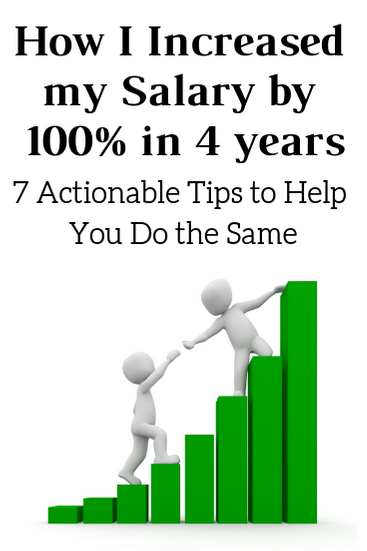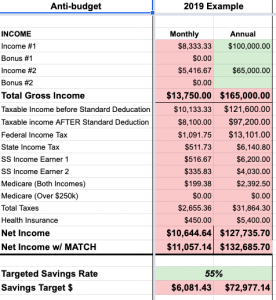 I am the youngest of three boys. As the baby of the family, I was the last child to finish high school and leave the house. In those last few years of high school, I had free rein of the house.
I am the youngest of three boys. As the baby of the family, I was the last child to finish high school and leave the house. In those last few years of high school, I had free rein of the house.
My family, while middle-class, had quite a large house now that I look back at it. The place we called home was a 3,000 square foot house with 5 bedrooms and 2 bathrooms, and a full daylight basement. It was situated on an acre of property and in a small neighborhood with a lot more acres to explore.
After both of my brothers were in college, you can imagine how much space I had to myself. And as any entrepreneurial teenager would do, I collected more and more stuff to fill the space.
I had actually started accumulating before high school. In middle school, I bought my own laptop (used off eBay) with money that I had earned from mowing lawns.
I later increased my income with a “real job” (which was working at a fun center, primarily as someone who ran Lazer Tag) to what seemed like unlimited money as a teenager. I accelerated the pace that I accumulated new possessions.
Because I was working 28 hours per week while going through high school (which was the maximum number of hours that the state allowed a high school student to work at the time), I had plenty of disposable income to throw at new gadgets and possessions to fill up my room, even after saving at least half of my income for college.
While I wouldn’t consider my younger self a hoarder, I loved getting new, shiny objects. It became a game of figuring out what I would acquire next. Just when my parents thought I had couldn’t fit anything else in the room, I would come home with a new item (and sometimes a new layout to maximize the space).
Throughout the course of four years, I accumulated a lot of stuff. My childhood bedroom (approximately 13’x15′) soon had the following things crammed into it:
- Full-size bed
- L-shaped desk
- Futon
- A designer leather chair that probably retailed at $2k+ (that I bought used for $300)
- 32-inch television (back before there were flat screens)
- PlayStation 2 and several other gaming consoles
- VCR player (which at the time had a fancy 60-second rewind feature)
- a new Dell laptop (to replace the used one from middle school)
I could not get enough.
As I look back on this time of my life, I can see that my life centered around acquiring more stuff. It was a life that left me always wanting more. I’m hesitant to use the word addiction, but that is probably a fair description if I am being honest with myself.
Now that we have embarked on our journey to financial independence, actively pursuing a life with more meaning and happiness, I have a completely new perspective on life. While it did not happen overnight, this new perspective is radically different than how I used to see the world and how the majority of Americans live their lives.
This new perspective, and arguably the financial independence movement, is driven by one of the most powerful words: enough.
While one application of “enough” is in the context of possessions (i.e. enough possessions), I’m not simply referring to collecting stuff. Instead, I’d like to explore the three applications of the word “enough” that help define our pursuit of financial independence.
This post may be a little more abstract, but I think it will provide a helpful framework with which to view the world and to better understand financial independence.
Enough Money to Live Freely
The financial independence movement is gaining a lot of attention lately. With mentions in traditional news outlets, like the NY Times, Market Watch, CNBC, and many others.
One of the core elements of those pursuing financial independence is the high savings rate. For anyone who understands the math of financial independence, this should be intuitive.
The more you save, the faster you accumulate wealth and the earlier you achieve financial independence.
Without knowing more about FI, it is easy to confuse those pursuing financial independence as being greedy (heck, we were stuck in this mindset of equating wealth with greed). In other words, it would be easy to assume that the individuals growing wealth are only doing it for the sake of growing their wealth. As a result, some may be turned off to the pursuit of financial independence.
But this would be missing the point.
Financial independence is about accumulating ENOUGH assets or building ENOUGH passive income to sustain your lifestyle so that you aren’t dependent on earned income. It’s not about hoarding wealth – it’s about having enough.
There are stories of individuals going to extreme measures to achieve FI in a short period of time that may confuse the purpose on the surface (another problem with the two-phase approach to financial independence), but deep down and beyond all of the noise, it’s all about the security and freedom that comes with having enough.
To put it simply, financial independence is not about building an empire or becoming the richest person in the world, but instead to collect enough money to buy your freedom.
Enough Possessions
Once you understand the reason behind accumulating assets AND you understand the tradeoff between buying stuff and building wealth, you begin to deprioritize owning more.
I know this to be true for myself. I am after all a person who has (at one point in life) lived my life week to week plotting the next purchase.
Consumerism is Deeply Embedded in our Culture
Going against this deep-rooted consumerism and not wanting more seems to be a completely foreign concept to a majority of those in the U.S. This is supported by the average consumer expenditures from 2017 as reported by the Bureau of Labor Statistics.
They report the averages for both total annual income (before taxes) and total annual expenses per family. When you add in an estimate for what the average American would pay in federal income tax and reduce that from the gross annual income, you get a more accurate picture of what percentage the average American is spending of their income. See the chart below for details.
| Average Annual Income (before taxes) | $73,574 |
| Estimated federal income taxes | $9,486 |
| Net Income (after taxes) | $64,088 |
| Average Annual Expenses | $60,060 |
| Difference (Savings) | $4,028 |
| Savings Rate | 6% |
The assumptions that I have added to the Bureau of Labor Statistics’ report also do not account for state income tax as well, but the savings rate is similar to the 6% savings rate reported by the BEA, suggesting that my added assumptions make this is a fairly accurate portrayal.

Both reports suggest that Americans are spending almost all of their income.
Why Must We Spend More When We Earn More?
Just a few months ago the lottery winnings had crossed an absurd dollar amount. When this happens it attracts all sorts of people who believe it is now worth buying a lottery ticket. My office was no exception.
My co-workers began to talk with excitement about what they would do with the jackpot if they were to win. As you might expect, these weren’t original ideas. It was the typical “I’d buy X,” sometimes followed by “and I’d save this amount.”
What I found fascinating was how the conversation was structured. The question that everyone in the room went around answering was “What would you buy with that kind of money?”
Without realizing it, my co-workers connected the idea of receiving more income with spending more money. And it’s not just tied to the lottery. When your income increases, so must your spending. When you received your last raise, how natural was it to earmark those additional funds for a purpose? This is a hidden script that most people do not recognize.
How Financial Independence “Caps” Consumerism
But from the financial independence perspective, consumerism has a cap on it. This new perspective does not reject it outright. After all, we haven’t stopped buying or consuming products.
Instead, as I said earlier, we have become aware of the tradeoff between buying items and buying our freedom. Here’s a sample (abbreviated) conversation that I have with myself when I’m evaluating a new purchase.
I’d really like to buy this item, but do I value it enough that is it worth the opportunity cost? If I don’t buy it, I could save this much money, which would help me towards the accumulation of assets goal of our financial independence plan and make real progress toward FI. Which one is more important to me: the additional time and energy that I would have to spend to earn this money or the item itself?
The key part of this approach is that this is not a deprivation mindset. It’s not about convincing myself to avoid the things that I really like but valuing different things and aligning my spending accordingly.
This new approach and the conversation above in placing consumer items at odds with larger goals also hints at the third and final use of “enough,” which is time.
Not Enough Time
Last, but certainly not least, our pursuit of financial independence is based on the belief that there is not enough time. Unlike money, time is a scarce and limited resource. Because of this, we now value our time more than money or possessions.
This is not a separate idea from the previous uses of “enough,” but rather reinforces them.
The core belief of financial independence is valuing time more than money or possessions.
Valuing your time is the core idea of the foundational book Your Money or Your Life by Vicki Robin and Joe Dominguez. They begin the book by writing:
“Your money or your life.”
If someone thrust a gun into your ribs and said that sentence, what would you do? Most of us would turn over our wallets. The threat works because we value our lives more than we value our money. Or do we?
They go on to suggest that if we truly valued our life more than our money, we’d live differently.
The words on that initial page and the subsequent pages were very compelling for me. It’s the reason that I asked Jess to read the book about a year ago.
Life is a precious resource and we do not want to lose sight of that.

Instead of taking time for granted (as we used to do), we are now placing more importance on our time. This is happening both by pursuing our passions and creating the life that we want to live now, and also by making progress toward financial independence.
This is again why Jess is now working part-time while we pursue financial independence. It’s not a matter of either-or but both-and. We choose to value our time and also work toward financial independence.
Why Financial Independence is a Balancing Act
This is also one of the great paradoxes of pursuing financial independence.
It’s about money, but it’s not about money. Two competing (and maybe complementary) beliefs.
When these two aspects are not held in tension is when the pursuit of FI becomes unbalanced.
For example, the MadFientist (an early Fioneer and someone from whom I’ve learned a lot) has talked about how he pursued financial independence too aggressively and the emotions that came with it. He relates how in his pursuit of achieving FI at an early age, he was miserable.
While I don’t think he said it in these exact words, it sounds like he lost sight of the ultimate goal. When you obsess over how you are going to get to this ambitious goal (which is easy to do), you lose sight of why you are pursuing it. It’s easy to focus so much on HOW to accumulate enough assets to live independently and forget the WHY.
This is why it is important to embrace that financial independence is as much about the journey as the destination.

























Hi,
Just found your blog and I’m really enjoying it. I like how you’re able to draw a line between resisting consumerism and taking frugality to the extreme. I agree that it is just as important to enjoy the journey to FI as it is to finally hit your FI number. Looking forward to enjoying your future posts!
-Jed
Thanks Jed. I appreciate it. It’s a tough balance to not go too far to either extreme both in regards to consumerism & frugality as it is the journey and destination of FI.
I love this post, Corey. I have the great pleasure of “meeting” your wife through the interwebs of blogging. It’s additionally nice to hear your perspective. You have so many quotable lines here that I’m having a hard time choosing which one to tweet…
Thanks, Deanna. I appreciate it. It’s a different type of post to write so I wasn’t sure how it’d be received. Yes, it’s always amazing to “meet” new friends on the internet. Hopefully, we’ll be able to connect in person someday too.